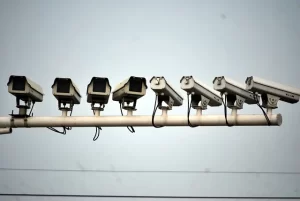Table of Contents
ToggleLearn how to start a departmental store with this comprehensive guide covering market research, funding, store layout, and more. Get started today!
Frequently asked questions about the departmental store.
What are the steps involved in starting a departmental store?
The steps involved in starting a departmental store include researching the market, creating a business plan, securing funding, selecting a location, hiring employees, setting up systems and procedures, purchasing inventory, and finally, launching and marketing the store.
How do I research the market for my departmental store?
To research the market for your departmental store, you can conduct surveys, analyze industry trends, and gather data on consumer preferences and habits. Additionally, you can visit competitor stores and study their offerings and strategies.
How do I select the right location for my departmental store?
To select the right location for your departmental store, you should consider factors such as foot traffic, accessibility, parking availability, and the presence of other stores and businesses in the area. Additionally, you can research demographic data to ensure that your target market is present in the area.
How do I start a mini department store?
To start a mini department store, you need to research the market, create a business plan, secure funding, select a location, hire employees, purchase inventory, and launch and market your store. Ensure to consider factors such as foot traffic, accessibility, parking availability, and the presence of your target market while selecting the right location.
Is opening a departmental store profitable?
Yes, opening a departmental store can be profitable if done correctly. A successful departmental store requires a thorough understanding of the market, effective management, good customer service, and a focus on offering high-quality products at competitive prices.
How to start a departmental store: Involves the following steps.

- Conduct market research: Analyze the demand for the products you want to sell, the competition in the area, and the target audience.
- Create a business plan: Create a plan that includes details of your store, products, marketing strategy, and financial projections.
- Secure Funding: Raise the capital you need for your business through loans, investments or a combination of both.
- Obtain licenses and permits: Register your business and obtain all necessary licenses and permits from the government.
- Rent or Buy a Space: Find a suitable space for your store and negotiate a rental or purchase price.
- Set up the store: Arrange for the construction of the store, fixtures and fittings and stock it with products.
- Hire staff: Hire and train employees to work in different departments of your store.
- Launch the store: Advertise your store and organize an opening event to attract customers.
- Monitor Performance: Continuously monitor your store’s performance and make necessary changes to improve it.
Note: This is a general guide and specific requirements and regulations may vary depending on your location in India.
How to start a departmental store, shall I take a franchise or start independently?
Whether you take on a franchise or start independently depends on your personal circumstances and goals. Here are some factors to consider:
- Capital: Starting independently usually requires more capital as you are responsible for all aspects of the business On the other hand, taking on a franchise often requires less initial investment, as the franchisor provides support and resources.
- Experience: If you have limited experience in the industry, taking on a franchise can provide you with a proven business model and support from the franchisor. Starting independently requires more trial and error and can be a more challenging option.
- Marketing and Branding: A franchisee often benefits from the franchisor’s established brand and marketing efforts. Independent startups require more effort and investment to establish brand recognition.
- Flexibility: Owning a franchise often comes with certain restrictions, such as using only approved suppliers, following established operating procedures and adhering to the franchisor’s marketing guidelines. Starting out independently gives you more flexibility to run the business as you see fit.
- Return on Investment: Both options have the potential to generate a return on investment, but the timeline and amount of return may vary.
Ultimately, the decision to take on a franchise or start independently should be based on your personal circumstances, goals, and comfort level with risk. Careful research and consideration of all options are advised before making a decision.

How to get supplies when I start a departmental store independently?
There are single-point suppliers for provision stores/stationery items/electrical items. Single-point suppliers are wholesalers or distributors who supply a wide range of products to retailers. They offer provision store owners a convenient one-stop solution for purchasing their inventory, as they can source multiple products from a single supplier instead of dealing with multiple suppliers for different product categories.
By working with a single-point supplier, provision store owners can save time and simplify their procurement process. However, it is important to carefully evaluate the quality, price, and reliability of suppliers to ensure they are a good fit for your business. You may want to compare products and prices offered by multiple single-point providers to get the best deal.
Ideal inventory value per square foot for a department store.
The ideal inventory value per square foot for a department store in India can vary widely depending on various factors, such as the type of product sold, target customer demographic, store location, and overall business strategy of the store.
As a rough estimate, a department store in India can aim for an average inventory price per square foot anywhere from INR 2,000 to INR 10,000 or more. However, it is important to note that this is only a general range and the actual value may be higher or lower depending on the factors mentioned above.
It is also important to consider that a high inventory value per square foot does not necessarily guarantee success, as there are other factors such as product mix, pricing, marketing, and customer service that play a role in the overall success of the division. Store ideal inventory values per square foot will depend on the specific goals and strategies of each individual store.
Profit margin in departmental store business.
Average margins for department store businesses can vary depending on a number of factors, such as the type of product sold, target customer demographics, store location, and the store’s overall business strategy.
Generally, department stores aim for a 20-40% gross margin, which means that they sell a product at a price that is 20-40% higher than the cost of acquiring the product from the supplier. However, this margin may be higher or lower depending on the product category and competition in the market.
It’s important to remember that the average margin is only a rough estimate, and actual margins will depend on a variety of factors, including product costs, overhead costs, and competition. Department store owners should carefully evaluate their costs, prices, and competition to determine the ideal margins for their business.
How to Start a Departmental Store: Understanding the Employees required in a 1000-sqft store.
The number of employees required for a 1000-square-foot department store depends on various factors, such as the type of product sold, the target customer demographic, the location of the store, and the overall business strategy of the store.
As a rough estimate, a department store with a floor area of 1000 square feet may require 5 to 10 employees, depending on the number of departments, the size of each department, and the level of customer service required. This may include cashiers, sales associates, stockroom staff, and managers.
It is important to note that this is only a rough estimate and the actual number of employees required may vary depending on the specific needs and goals of the store. A careful assessment of the store’s operational requirements and budget is recommended to determine the ideal number of employees for your business.
Number of customers a new departmental store can expect.
The number of customers a new department store can expect to receive per day can vary greatly depending on a variety of factors, such as store location, target customer demographics, marketing efforts, and competition in the area.
As a rough estimate, a new department store in India can expect 20 to 50 customers per day in the initial stages of business and this number may increase as the business grows and establishes a customer base. However, this is only a general estimate and the actual number of customers may be higher or lower depending on the specific situation of the store.
It is important to note that the number of customers per day is one of many metrics used to measure the success of a department store, and other factors such as customer satisfaction, repeat business and profitability also play an important role. New department store owners should focus on providing high-quality products and customer service and continuously evaluate and improve their business to attract and retain customers.

Average amount of money spent by each customer.
In the department store business, ticket size refers to the average amount of money spent by each customer during a single transaction.
Ticket sizes in a department store can vary widely depending on a number of factors, such as the type of product sold, target customer demographics, store location, and the store’s overall business strategy.
As a rough estimate, the average ticket size in a department store in India can range from INR 500 to INR 2000 or more, depending on the type of product being sold and the customer demographic. However, this is only a general range and actual ticket sizes may be higher or lower depending on store specific conditions.
It is important to note that ticket size is one of many metrics used to measure the success of a department store, and other factors such as customer satisfaction, repeat business and profitability also play an important role. Department store owners should focus on providing high-quality products and customer service and continuously evaluate and improve their business to increase ticket size and attract and retain customers.
How to Start a Departmental Store: Understand space allocation.
Calculating the department balance in a 1000 square foot department store will depend on various factors, such as the type of product sold, target customer demographics, store location and overall business strategy of the store.
Typically, a department store with a floor area of 1000 square feet may have the following departments:
- Cashiers and checkout counters
- Clothing and footwear
- Beauty and personal care
- Home accessories and décor
- Food and groceries
- Electronics and Gadgets
Specific categories and their size will depend on the target customer demographic of the store and the type of product sold. For example, a store targeting families and selling a variety of products might have large sections for household goods and groceries, while a store targeting young adults and selling mostly fashion and beauty products might have large sections for clothing and personal care. .
It is important to note that this is only a typical example and the actual number and size of sections may vary depending on the specific situation of the store. It is recommended to carefully evaluate the store’s target customer demographics, product offerings and operational requirements to determine the ideal balance of categories for your business.
Space allocation for a grocery dominated 1000 sqft departmental store.
If you want a 1000 square foot department store to be dominated by grocery products, you may want to consider allocating a large portion of the store’s floor area to the food and grocery department.
A general guideline for balancing categories might be:
- Cashier and Checkout Counter: 100-150 sq.ft
- Apparel and Footwear: 200-300 sq.ft
- Beauty and Personal Care: 200-300 sq.ft
- Home Furnishings & Decor: 200-300 Sq.ft
- Food and Grocery: 300-400 sq.ft
- Electronics and Gadgets: 100-200 Sq.ft
The allocation will prioritize the food and grocery segment, while still offering customers a range of products in other segments. It is important to note that this is only a rough guide and the actual floor area allocation may vary depending on the specific conditions of the store and the products sold.
It is recommended to carefully evaluate the store’s target customer demographics, product offerings and operational requirements to determine the ideal balance of categories for your business.
Investment required for a small departmental store.
Let us see how a 1000 square feet departmental store can be started with 10-15 lakhs investment. (In a sub-urban area/residential area- but away from market place, this is to avoid excesive establishment cost.
The investment breakdown for a department store in India will depend on various factors, such as the location of the store, the type of product sold and the target customer demographic.
Following is a rough estimate of a 1000 square feet store:
Advance Rent / Security Deposit: Approximately INR 1-2 lakhs depending on the location and construct of the shop. [ Considering Rs 30-50 rent/sqft, 3 month advance rent as security deposit, or 2 laks one time security deposit ] Going above this eqution, may hurt your profitability.
Interior Design and Renovation: Approximately INR 1-1.2 lakhs, depending on the type of fixtures and fittings required and the overall design of the store. [Investment which has low salvadge value should not exceed 20% of total investment]
Furniture and Fixtures: Approximately INR 1-2 lakhs, depending on the type of furniture and fixtures required and the overall design of the store.[Investment which has low salvadge value should not exceed 20% of total investment]
Inventory: Approximately INR 4-6 lakhs, depending on the type of product being sold and overall business strategy of the store.
Legal and Licensing Fees: Approximately INR 0.2-0.3 lakh, depending on the type of legal and accounting services required and the location of the store.
Marketing and Advertising: Approximately INR 0.25-0.35 lakh, depending on the marketing and advertising efforts required to launch the store.
Miscellaneous expenses (eg insurance, utilities, etc.): Approximately INR 0.25-0.35 lakhs, depending on the specific circumstances of the store.

It is important to note that these are rough estimates and the actual costs involved in starting a department store in India will depend on various factors, such as the location of the store, the type of products sold and the target customer demographic. It is advisable to consult a professional business advisor to get an accurate estimate of the costs involved in starting your business and allocate your investment accordingly.
In the case of a department store, the working capital required will depend on various factors, such as the size of the store, the type of products sold and the target customer demographic. On an average, a working capital requirement of approximately INR 2-3 lakh per month is considered ideal for a department store in India.
This means an additional INR 2-3 lakhs should be set aside for working capital, taking the total investment to approximately INR 10-15 lakhs. It is important to note that these are rough estimates, and the actual working capital requirements for a department store in India will depend on various factors, such as the location of the store, the type of product sold and the target customer demographic. It is advisable to consult a professional business advisor to get an accurate estimate of working capital required for your business.
How to Start a Departmental Store: Understanding the Estimated Fixed Costs
The specific costs of starting a department store in India will depend on various factors, such as the location of the store, the type of products sold and the number of employees.
Following is a rough estimate of some of the typical fixed costs involved in starting a department store:
Rent: INR 20,000 to INR 30,000 or more per month depending on the location and size of the store.
Utilities: INR 5,000 to INR 10,000 or more per month depending on the size of the store and the type of utilities required.
Insurance: INR 10,000 to INR 12,000 or more per annum, depending on the type of insurance coverage required and store location.
Maintainance: INR 20,000 to INR 25,000 or more per anum, depending on the type of furniture and fixtures and the overall design of the store.
Staff Salary: INR 20,000 to INR 25,000 or so per month, depending on the number of staff and their salary.
Legal and Accounting Fees: INR 10,000 to INR 12,000 per month, depending on the type of legal and accounting services required and the location of the store.
Again, these are only rough estimates and actual costs will depend on the specific conditions of the store. It is advisable to carefully evaluate all the costs involved in starting and running a department store and consult a professional business advisor to get an accurate estimate of the costs involved in starting your business.
Challanges you might face while running a departmental store.
Like any other business, department stores in India face a variety of threats that can affect their operations and profitability. Some of the key threats include:
Competition: The retail industry in India is highly competitive, with many players vying for market share. Department stores must be able to differentiate themselves from their competitors to attract and retain customers.
Economic Conditions: Changes in the economy, such as inflation, recession or changes in consumer spending patterns, can have a significant impact on department store profitability.
Inventory Management: Effective inventory management is critical to the success of department stores. If the inventory level is too high, the store may incur higher carrying costs and if the inventory level is too low, the store may miss sales opportunities.
Employee Theft: Employee theft is a common problem in the retail industry and can have a significant impact on a department store’s bottom line. To control employee theft, it is important to implement strong internal controls and conduct regular inventory audits.
Supply Chain Disruption: Department stores depend on a smooth and efficient supply chain to stock their shelves and meet customer demand. Disruptions in the supply chain, such as natural disasters or supplier bankruptcies, can result in stock shortages and lost sales.
To control these threats, department stores in India can implement various measures, such as:
Offering high-quality products and excellent customer service to differentiate themselves from their competitors.
Monitoring economic conditions and adjusting their business strategies accordingly.
Implementing effective inventory management system and auditing inventory levels regularly.
Conducting background checks and drug tests for new hires and implementing strict internal controls to prevent employee theft.
Building strong relationships with suppliers and implementing contingency plans for supply chain disruptions.
It is important to note that these are only a few examples, and the specific measures required to control the threat in a department store in India will depend on various factors, such as the location of the store, the type of product sold and the target customer demographic. It is recommended to consult with a professional business advisor to develop a comprehensive risk management plan for your business.
Scale up your business.
The timing of opening a second store will depend on several factors, including the success of the first store, the availability of suitable real estate in other areas and the availability of financial resources.
Generally speaking, it’s a good idea to wait until the first store is established and profitable before expanding to a second location. This will allow you to refine your business model, develop efficient systems and processes, and build a solid customer base.
Once the first store is established and profitable, you can consider opening a second location. When evaluating the viability of a second store, it’s important to consider factors such as local demographics, competition in the area and the availability of suitable real estate.
It is also important to have a clear growth strategy with a defined target market and a strong brand identity before opening a second location. This will help ensure that the second store is able to build a loyal customer base and achieve long-term success.
In conclusion, there is no specific timeline for expanding to a second store, but it is important to wait until the first store is established and profitable and have a clear growth strategy before doing so. It is recommended to consult a professional business advisor to develop a comprehensive growth plan for your business.
Furnitures and fixtures guide.
In a department store, different types of furniture are used to create an attractive and functional shopping environment. Some common types of furniture used in a department store include:
Gondolas: These are shelving units used to display merchandise, usually in an aisle or along a store wall.
Display cases: These are used to display high-end or fragile items such as jewelry, electronics, or collectibles.
Cash registers: These are used to process customer transactions and may include various features such as barcode scanners, credit card readers, and receipt printers.
Clothing racks: These are used to display clothing and other textiles and come in a variety of styles and sizes, including freestanding, wall-mounted, and circular.
Storage units: These are used to store merchandise and supplies in an organized and easily accessible manner.
Seating: This can include chairs, benches and couches, which are used to provide a comfortable shopping experience for customers.
Lighting: A well-lit store can make a big difference to the customer experience, so it’s important to choose high-quality lighting fixtures that will create a warm and inviting atmosphere.
Decorative elements: This can include artwork, plants and other decorative items that can help create a welcoming and attractive shopping environment.
This is not an exhaustive list, and the types of furniture used in a department store will depend on the size of the store, the type of product sold, and the overall design and layout of the store.
Conclusion.
In conclusion, starting a departmental store is a challenging but achievable goal. By following the tips outlined in this guide on how to start a departmental store, entrepreneurs can successfully launch a store that meets the needs of their community and stands the test of time.
Key factors to consider include market research, funding, store layout, product selection, and marketing strategies. The key to success when starting a departmental store is careful planning and preparation. By taking the time to do your research and understand the needs of your target market, you can set yourself up for success and build a profitable departmental store. Whether you’re a seasoned business professional or just starting out, these tips on how to start a departmental store can help you achieve your goals and succeed in this exciting industry.
Note: Neighborhood stores are often considered recession-proof because they serve the basic and essential needs of the local community, such as food and household items. During an economic downturn, people may cut back on non-essential purchases but still need to buy everyday essentials, making neighborhood stores a reliable source of income. Additionally, neighborhood stores often have strong ties to their local community and a loyal customer base, helping them weather economic challenges.
Hope this How to start a departmental store gave you the necessary information you were looking for, if you need any other clarification please write to me, I will surely reply to you within a week or two.




